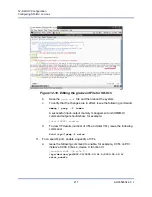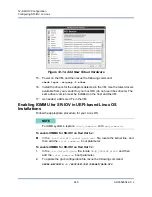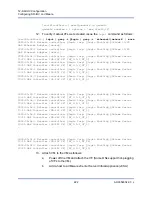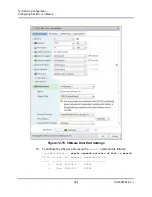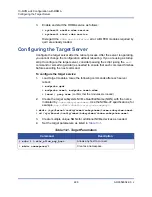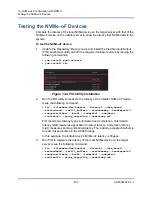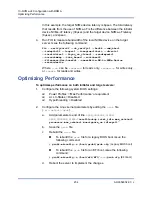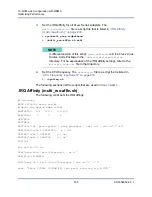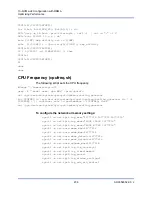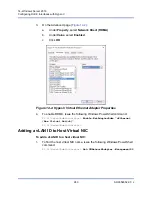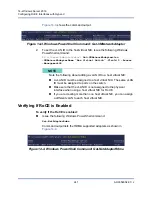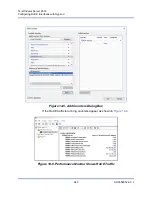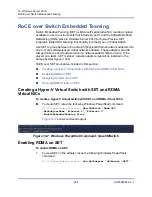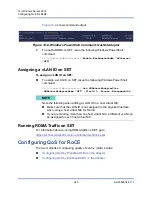
13–NVMe-oF Configuration with RDMA
Configuring the Target Server
230
AH0054602-00 J
5.
Create a symbolic link (symlink) to the newly created NQN subsystem
:
#
ln -s /sys/kernel/config/nvmet/subsystems/
nvme-subsystem-name subsystems/nvme-subsystem-name
6.
Confirm that the NVMe target is listening on the port as follows:
#
dmesg | grep nvmet_rdma
[ 8769.470043] nvmet_rdma: enabling port 1 (1.1.1.1:4420)
#
echo -n /dev/nvme0n1 >namespaces/
1/device_path
Sets the NVMe device path. The NVMe device
path can differ between systems. Check the device
path using the
lsblk
command. This system has
two NVMe devices:
nvme0n1
and
nvme1n1
.
#
echo 1 > namespaces/1/enable
Enables the namespace.
#
mkdir /sys/kernel/config/nvmet/
ports/1
#
cd /sys/kernel/config/nvmet/ports/1
Creates NVMe port 1.
#
echo 1.1.1.1 > addr_traddr
Sets the same IP address. For example, 1.1.1.1 is
the IP address for the target port of the 41
xxx
Series Adapter.
#
echo rdma > addr_trtype
Sets the transport type RDMA.
#
echo 4420 > addr_trsvcid
Sets the RDMA port number. The socket port num-
ber for NVMe-oF is typically 4420. However, any
port number can be used if it is used consistently
throughout the configuration.
#
echo ipv4 > addr_adrfam
Sets the IP address type.
Table 13-1. Target Parameters (Continued)
Command
Description


